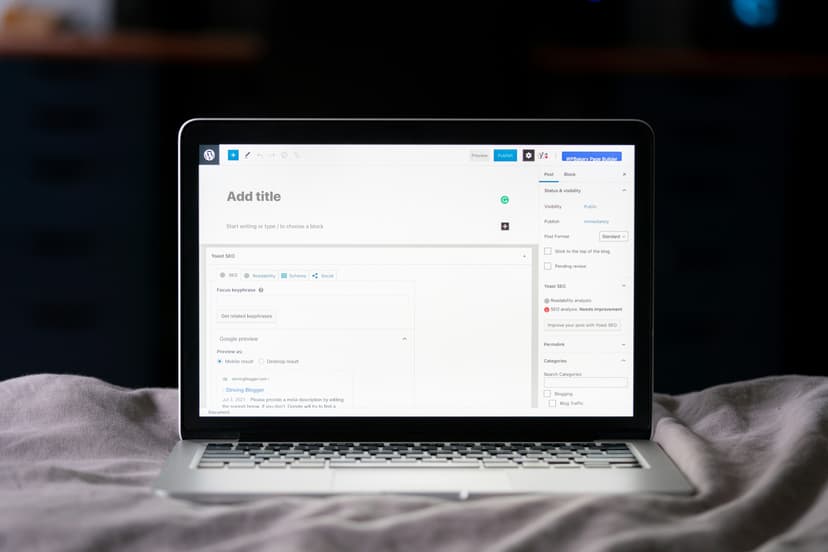Marketing
October 23, 2025
|
2 min read
Best Practices for Integrating AI Translation with Content Management Systems
Integrating AI translation directly into your Content Management System (CMS) has become a game-changer for marketers aiming to scale efficiently and maintain brand consistency. Explore best practices and learn the 8 crucial steps for proper CMS integration.
LILT Team

In today’s hyperconnected world, launching and maintaining multilingual websites and applications is crucial for reaching global audiences. And the easiest way to achieve that is through an (you guessed it) effective integration strategy. Integrating AI translation directly into your Content Management System (CMS) has become a game-changer for marketers aiming to scale efficiently and maintain brand consistency.
This blog explores essential best practices for integrating AI translation with content management systems to streamline global content workflows, sustain high quality, and accelerate time-to-market. Furthermore, we’ll share the 8 crucial steps for proper CMS integration.
Why Integrate an AI Translation Tool with Your CMS?
Traditionally, translating content for multiple languages involved manual processes, emailing files back and forth, or labor-intensive coordination with external vendors. An AI-powered translation integration within a CMS offers major benefits:
- Automation and Speed: Automatically translate new or updated content as soon as it’s published, saving countless hours.
- Consistency: Leverage translation memories and brand glossaries seamlessly.
- Scalability: Effortlessly grows and supports an expanding number of languages and pages.
- Continuous Localization: Integrate with development sprints to keep content current in fast-moving environments.
By embedding AI translation in the CMS, teams can focus on creating quality content while technology handles the multilingual adaptation with speed and consistency. After establishing that foundation, the next sections will outline the steps needed to properly integrate AI translation into your CMS solution.
1. Choose CMS-Compatible AI Translation Tools
Not all AI translation tools are designed for seamless CMS integration. Assess whether the translation solution supports your CMS platform (e.g., WordPress, Drupal, Contentful, Adobe Experience Manager, Sanity, etc.) and offers plug-ins, SDKs, or APIs for automated workflow setup. For example, Smartcat, Transifex, and LILT provide ready-made integrations that sync directly with major CMS platforms.
2. Define Clear Translation Workflows
Map out when and how content moves from creation to translation to publication. Decide which content requires machine translation only, which needs human review, and which is off-limits. Typical workflows involve:
- Auto-translation of low-stakes content (product descriptions, internal docs)
- Human review for marketing copy, legal, or compliance materials
- Automated quality assurance with predefined glossaries and style guides
Documenting workflows reduces risks of content getting stuck or mistranslated.
3. Use Glossaries and Style Guides
Maintain brand voice and terminology consistency by feeding glossaries and tone guidelines into AI models integrated with your CMS. These resources prevent incorrect translations of product names, slogans, or industry-specific terms and ensure a uniform customer experience worldwide.
4. Leverage Translation Memories (TM)
Translation memories store previously translated segments to boost speed and consistency. Any successful CMS integration should allow your AI solution to access TM databases automatically, preserving past translations and avoiding repeated human effort.
5. Automate Content Detection and Push for Translation
Select AI-powered CMS integrations that detect new or updated content in real time and automatically start translation processes. This is critical for sites with frequent updates or large product catalogs, like e-commerce or real estate platforms, where manual translation would be overwhelming.
6. Enable Human-in-the-Loop Reviews
While AI provides scale and speed, human translators are still essential for high-quality localization. Ensure your CMS integration supports easy handoff to professional translators for editing and approval within the platform. Many solutions also allow blending AI drafts with human corrections seamlessly.
7. Monitor Quality with Analytics and Dashboards
Utilize translation management systems with advanced reporting to track throughput, error rates, and turnaround times. Insights help refine your integration workflows and identify areas where human intervention is needed.
8. Test Integrations Thoroughly Before Scaling
Don’t rush full system integration. Start with pilot projects and limited language sets to evaluate:
- Translation speed and accuracy
- CMS syncing reliability
- Automated workflows effectiveness
Iterate based on feedback and gradually onboard more teams and markets. This will ensure that the CMS integration is set up for short term, mid term, and long term translation success.
Common Pitfalls to Avoid
- Relying solely on AI for critical sensitive content without human oversight. If you are using a CMS as your website management tool, make sure you have human reviewers to ensure nuanced translations are accurate.
- Ignoring CMS compatibility leading to workflow disruptions and manual interventions. Make sure that the AI translation platform you’re onboarding has an integration that will not aggressively delay current translation jobs in progress.
- Overlooking regular updates to glossaries and translation memories, causing brand inconsistencies. You lose much of the power of trained AI models without optimizing effectively.
- Neglecting to define clear process ownership and roles across content creators, translators, and reviewers. Change management is an often underlooked aspect of any successful integration effort, and you should make sure the involved stakeholders receive just as much attention as the systems themselves.
The Strategic Impact of AI Translation in CMS
Integrating AI translation effectively within your CMS accelerates your content delivery pipeline, empowers agile marketing, and unlocks global growth opportunities. It enhances user engagement by providing localized, accurate experiences at scale. Moreover, smart integration preserves brand integrity and SEO benefits across languages, which are critical for international success.
Share this post
Find some time with LILT
Enterprise-grade content seamlessly translated with AI to help your business scale globally.
Book a MeetingShare this post